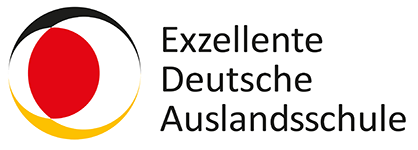”One of the findings states that Open Work does not mean the children can do anything they want, but that they want to do what they do.“ (Jean Piaget)
- Open Work is an inclusive concept. As the name implies, it is “open” to all children so that no one is excluded.
- Open Work aims at an open society, in which everyone is able to participate and everyone can contribute to it. The central concern of the concept of ‘Open Work’ is to make the experience of personal independence and joint responsibility accessible for children and adults.Open Work aims at expanding self-determination and participation for children of all ages.
The core of the concept is the well-being of every child regardless of his or her peculiarities. - Open Work challenges us to think open-mindedly.
The road to shared responsibility and cooperation is a team process that takes us from reflecting about previous experiences, testing of changed structures and actions to common orientations and guidelines. - Open Work stands for a constant re-examination of pedagogy and organisational forms that are adapted to the changing needs of children and families and their own cognitive processes. Therefore, open work is a process that never ends.
- The child is seen as an independent personality with certain developmental needs and interests.
- Children can align their activities with their own interests and wishes by means of the opening up of kindergarten groups.
For our educational work this means:
- Children have their home group, which gives children emotional security and the feeling of shelter.
- Children pursue specific goals with each of their actions and perceive them in a self-reflective way.
- We are companions who create an environment for children that allows them to meet their developmental and learning targets independently.
How do we implement this in our everyday work?
- The groups’ doors are open.
- Certain daily events such as the morning circle, birthdays, special offers or breakfast and lunch take place within the children’s own groups.
- The team coordinates the rhythm of “open” and “closed” times and makes it transparent to all children. This rhythm follows a partially set daily schedule.
- All teachers and teacher assistants (specialists) are responsible for all children in their sphere of influence.
- Our specialists know all children. A structured and systematic observation of the children assures individual and child-oriented support and educational assistance. This allows for the best possible assessment of the child’s development as
- Each child is observed by our specialists: different viewpoints and impressions become evident.
Advantages of Open Work:
- Children know all the rooms, all teachers and teacher assistants and all other children
- Younger children have more behavioural paradigms and role models to choose from – they learn from older children
- Children have a wider choice in making friends: they get to know more children and it is easier for them to find playmates for certain activities
- Siblings in different groups can take part in activities jointly
- Positive social interaction is promoted
- Children can choose the teacher or assistant teacher that they can confide in
- Children can choose from a wider range of activities
- Children are presented with more offers to choose from with respect to their needs, interests, and desires: more offers, more activities and more projects imply more freedom of choice, more self-determination, more responsibility and more independence
- They become aware of their own strengths and interests and get a clearer self-image
- They realise their own development areas and choose compensatory offers at their sole discretion
- They become more self-confident
Overview Kindergarten concept:
> Our Mission Statement
> Educational Orientation
> Daily Routine
> ”Open Work“
> Facilities
> Younger and older children under one roof
> Room and time to rest
> Areas of Education
> Learning experiences in the game
> Children in the last year in kindergarten
> Public relations
> Observation and Documentation
> Quality Assurance
This post is also available in: German




